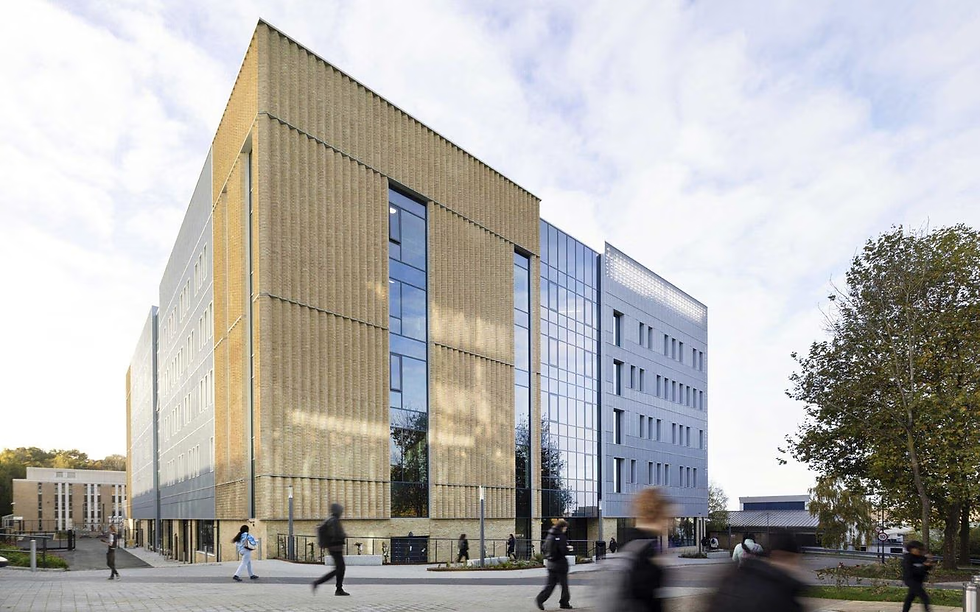Oslo's new museum design is driven by climate concerns
- Heather Fearfield
- Oct 25, 2021
- 2 min read

Munch Museum, Oslo, Norway (Photo credit: Einar Aslaksen)
It has been an important weekend for Spanish architecture practice Estudio Herreros with the opening of their new museum building, the Munch museum in Oslo, Norway. An impressive set of exhibitions and events are due to entice the public into exploring the unique setting for artworks by the country's most celebrated artist, Edvard Munch.
The foundations for the new museum building were laid in 2016, the museum leaders say, after much debate about both design and location. The design is based on the idea of a tower-shaped museum. Sixty meters in height with a leaning top section, it is clad in recycled, perforated aluminium panels of varying degrees of translucency and is a highly visible landmark on all sides.
The museum reports that the architects hope that the building will establish strong links between the regeneration of the surrounding urban area and Edvard Munch's art.
The structure features airlocks to control temperature and humidity, allowing the use of energy-saving and natural ventilation. Many of the architectural choices are climate driven with the enclosed east-facing facade avoiding excessive heat in the summer. The museum says that the building has been planned in accordance with the FutureBuilt criteria which demands a halving of greenhouse gas emissions compared to conventional modern buildings in relation to transport, energy consumption and choice of materials.
It has been built using low-carbon concrete and recycled steel, and its loadbearing structure has been designed with a technical lifetime of 200 years. In addition, the building complies with Passiv Building standards. The wavy aluminium panels screen sunlight effectively, and also reflect sunlight to avoid excessive temperature fluctuations. The building is connected to a district-heating system and also to a seawater cooling plant. The location is very close to the city's largest public transport hub and the 100 cycle-parking spaces at Edvard Munchs Plass.
From the start, Estudio Herreros has intended MUNCH to be a 'non-intimidating building', unlike some traditional museums it says. There are eating and drinking venues on 13 floors, plus the top floor will offer some of Oslo's most spectacular views. The practice believes that the building is part of a generation of new museums all over the world that are redefining cultural institutions, and that are moving forward from the concept of an historical archive to become venues for social gatherings - places where everyone can meet up and discover something new.
Stein Olav Henrichsen is the Director of MUNCH - the Munch Museum, Oslo.
Below - Munch Museum, Oslo (Photo credit: Einar Aslaksen)







コメント